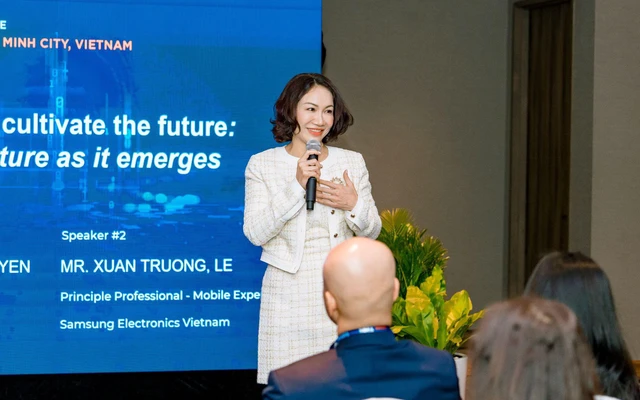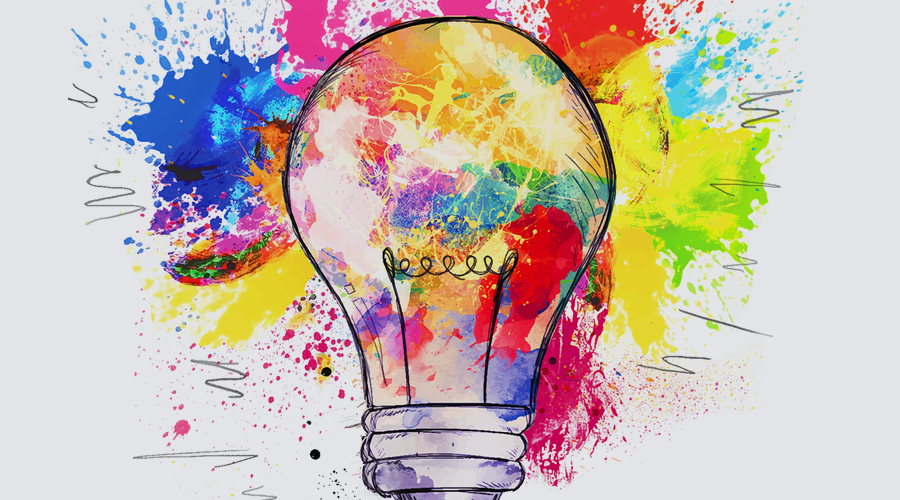What we know about creativity and effectiveness
- share
- copy link
There is compelling evidence that creativity is key to deliver increased effectiveness. However, there is concern that short-termism and a decline in ‘right brain’ creativity is creating a crisis in creative effectiveness. Creativity is most effective when it is distinctive, emotional, novel, well-branded and has some longevity. It also needs the right financial and media support plan to succeed.
Definition
Effectiveness is proof that a campaign has met its objectives, particularly sales, market share or profits. It is publicly recognised via industry effectiveness awards. Creativity is a subjective term, but is judged and recognised by industry creative awards.
Key Insights
1. The most effective campaigns are both highly creative and long term, over a time period of at least three years
New research has provided answers to the challenge of linking creativity to marketing effectiveness. The Creative Effectiveness Ladder breaks out six categories to describe the impact of brand messaging and draws on insights from 4,863 effectiveness award entrants and winners from 2011 through 2019, from every major market in the world. Marketers can climb the Ladder by setting the right objectives and budgeting realistically. Great work is highly creative and marketers should use the levers of media budget, campaign duration and number of media channels to drive Creative Commitment up as far as possible for each campaign. Effective campaigns are enduing in nature, setting out strategies and goals over a time period of at least three years, and always have sustainable brand growth at heart.
2. Short-termism is creating a crisis in creative effectiveness
A study by consultant Peter Field and the Institute of Practitioners in Advertising (IPA) found that creatively awarded campaigns are now no more effective than non-awarded ones – a significant change from earlier research that showed a large effectiveness advantage for creatively awarded work. The change is largely due to the obsession with short-term sales activations over long-term brand building – what Field calls “disposable creativity”. However, there are still high-performing creatively awarded campaigns, which are eight times more effective than their low-performing peers in terms of the number of business effects they generate, and almost sixteen times more likely to bring major profitability growth. These campaigns all take a more balanced approach to short and long-term objectives, including longer campaign duration.
3. Creative effectiveness is threatened by a decline in ‘right brain’ creativity
Various studies conducted by agency and research group System1 have found that ‘right brain’ creative elements proven to elicit emotional response and drive long-term effectiveness are less used today in advertising than in the past. One study of TV ads showed that over the last 15 years features characteristic of the right brain, based on empathy, relationships and human connection, have largely disappeared. These features include dialogue, implicit glances, scenes unfolding, accents and a clear sense of time and place. They are being replaced by ‘left brain’ features, which are literal, factual and explicit – and less effective. To reverse the decline, System 1 suggests five principles to make creative more right-brained:
- Entertain for commercial gain
- Think dramas, not lectures
- Play with culture, don’t mirror it
- People are characters, not props
- Local richness beats global blandness
4. Creativity is the biggest, most actionable driver of effectiveness
According to a 2019 analysis of thousands of entries to the Effie Awards, the top driver of effectiveness is current brand size. However, exceptional creative was the second most important effectiveness driver – and one that can help brands both big and small to make an impact. This analysis chimes with a 2014 study of the top drivers of advertising profitability, which found market/brand size to be the biggest driver of incremental profit and creative quality the number two driver, with potential to improve ROI by a factor of 12. While advertisers have little control over current brand/market size they can control creative execution.
5. Creativity delivers increased effectiveness when it is distinctive and emotional
WARC’s distillation of the current evidence around effective advertising outlines creativity as one of five key tools to improve effectiveness. Evidence for the importance of emotion in advertising has been stacking up over the last ten years from a variety of industry stakeholders – researchers such as System 1 and Kantar Millward Brown, neuroscience experts, effectiveness experts Binet and Field and clients such as Procter & Gamble. There is a debate about the importance of distinctiveness and differentiation. Professor Byron Sharp argues that having a distinctive, easily recognisable brand identity is what counts. Some researchers argue that a differentiated positioning in the market is also important but don’t disagree on the need for distinctiveness. As a result, there is common agreement on the need to plan for recognition, via the use of distinctive brand assets, to deliver effective advertising. It’s also important for effective creative to be executed within a financial and media framework that invests enough for growth, is balanced between brand-building and performance marketing, and plans for reach.
6. Creative effectiveness winners embrace innovation, branding and sustained impact
Analysis of the 2019 winners of Cannes Creative Effectiveness Lions and WARC’s Effective 100 global effectiveness rankings, highlights the importance of innovative, well-branded and sustained impact to be effective.
To capture consumer attention in a low-attention economy requires innovative thinking about creative and media. This can be using an emotional appeal or the right influencer but is also increasingly unconventional media placements such as toilet cleaner Harpic’s use of matrimonial ads in India, PR-driven stunts such as Visit Flanders’ Euro Effie Grand Prix Winner Mud Soldier or real world solutions that don’t look like ads but do something, such as the top two campaigns in the WARC 100 – Carvaan’s retro-chic music box and Savlon Soap Sticks.
Being recognisable through using distinctive brand assets is also vital to maximise effectiveness. Research by Kantar found that 2019 Cannes creative award winners were only 50% as effective at long-term branding as five years previously due too poor branding - only 25% of award winners were easily linked to the brand.
Several Cannes Creative Effectiveness winners looked to ideas that carried on under their own momentum after the official campaign duration period ended to create a lasting legacy - including living on in culture (It’s a Tide Ad), a more participatory business model (Xbox) or in the case of Grand Prix winner Carrefour, a policy change.
7. Brands need to marry creativity and consistency to be effective long-term
Concerned about short-termism, the industry – including DTC brands - appears to be shifting towards long-term brand-building in 2020. While culture, skills and metrics pose challenges to this shift, from the point of view of creativity the key challenge is how to be creative while retaining brand consistency in order to unlock the long-term equity and sales benefits. Examples like Snickers and Burger King show how this can be done. Snickers has won many Cannes Lions (including a Gold for Creative Effectiveness), with its enduring You’re Not You When You’re Hungry campaign that has been revived year after year (six years and counting) with a fresh take each time and which has boosted the Mars’s revenue by more than $50m. In 2019, Burger King picked up the inaugural Creative Brand of the Year Award at Cannes for a year of unrivalled creative excellence that capped a long-term sustained performance. The brand won 40 Lions across 15 different pieces of work - each described by the juries as being individually short-term, but collectively infused with a consistent, recognisable and memory-building narrative.
8. Creative radio ads boost purchase intent
A study of radio ads recognised for their high level of creativity at awards shows found they typically deliver a much greater increase in purchase intent than the norm of +6%. Among the award-winning group serious ads also showed a higher purchase intent than funny ads, with a +10% lift versus +6% for the humorous ones. The study showed the importance of sonic branding in driving purchase intent, with jingles, music and sonic identifiers all dramatically driving purchase intent versus ads that did not have them
9. Creativity will not drive effectiveness without the right strategy
Creatively awarded campaigns drive effectiveness by generating fame in the short term and price inelasticity in the long term. In order to use creativity to drive effectiveness brands should:
- Get the strategy right – incorrect strategy is the key reason for creatively awarded ads to fail in market
- Ensure a tight link to the brand by making it the centre of the creative idea
- Work with, not against, the brain – using familiar, distinctive brand assets
- Use emotion
- Invest behind it and stick with it
10. Combining creativity, disruption and great advertising accelerates brand value growth
A Kantar Millward Brown analysis of the BrandZ equity database found that while consumer perceptions of brand creativity, disruption and great advertising can each individually help grow brand value, returns are greater from using them together - on average brands perceived to have all three grew brand value by 265% on average over the last 12 years. Importantly this is not just about brand communication but encompasses all aspects of consumer experience with the brand.
11. Creativity boosts companies' financial results
According to management consultancy McKinsey companies that excel in creativity outperform their competitors in terms of financial results, specifically organic revenue growth, total shareholder return and net enterprise value. Based on 16 years of data from Cannes Lions awards, companies were given Award Creativity Scores. Those in the top quartile of the ratings were much more likely to have posted strong financial results than those lower down.
12. Creative drives advertising performance more than media, especially in digital
2017 US research into the relative impact of creativity and media placement on advertising performance found creative to be the biggest contributor at 49% versus media at 36%. Creativity was even more important in digital at a 56% contribution versus just 37% in TV. The difference between TV and digital is due to the greater variability of creative quality in digital compared to TV. The research also showed, however, that campaigns which delivered the strongest incremental sales growth were primarily (80%+) driven by creative in both TV and digital.
13. With the right long-term focus, digital creativity can boost effectiveness
Les Binet and Peter Field's study for the IPA - Marketing in the Digital Age - found online video is good at long-term brand building. Like TV, it lends itself to emotional advertising - the most effective long-term creative approach. Online video can also amplify the effects of TV. Adding TV and online video together in the media mix creates a 54% increase on average in the number of very large business effects versus 32% for TV only. Digital owned and earned media can amplify paid media, increasing business effects by 13% and 26% respectively.
Source: warc.com





